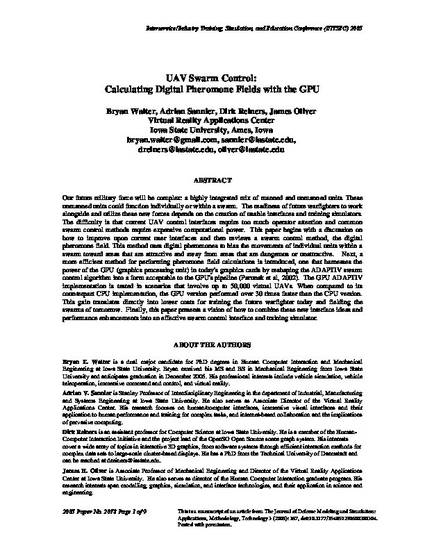
Our future military force will be complex: a highly integrated mix of manned and unmanned units. These unmanned units could function individually or within a swarm. The readiness of future warfighters to work alongside and utilize these new forces depends on the creation of usable interfaces and training simulators. The difficulty is that current unmanned aerial vehicle (UAV) control interfaces require too much operator attention, and common swarm control methods require expensive computational power. This paper begins with a discussion on how to improve upon current user interfaces and then reviews a swarm control method, the digital pheromone field. This method uses digital pheromones to bias the movements of individual units within a swarm toward areas that are attractive and away from areas that are dangerous or unattractive. Next, a more efficient method for performing pheromone field calculations is introduced, one that harnesses the power of the graphics processing unit (GPU) in today's graphics cards by reshaping the ADAPTIV swarm control algorithm into a form acceptable to the GPU's pipeline [1]. The GPU ADAPTIV implementation is tested in scenarios that involve up to 50,000 virtual UAVs. When compared to its counterpart CPU implementation, the GPU version performed over 30 times faster than the CPU version. This gain translates directly into lower costs for training the future warfighter today and fielding the swarms of tomorrow. Finally, this paper presents a vision of how to combine these new interface ideas and performance enhancements into an effective swarm control interface and training simulator.
Available at: http://works.bepress.com/james_oliver/25/

This is a manuscript of an article from The Journal of Defense Modeling and Simulation: Applications, Methodology, Technology 3 (2006): 167, doi:10.1177/154851290600300304. Posted with permission.